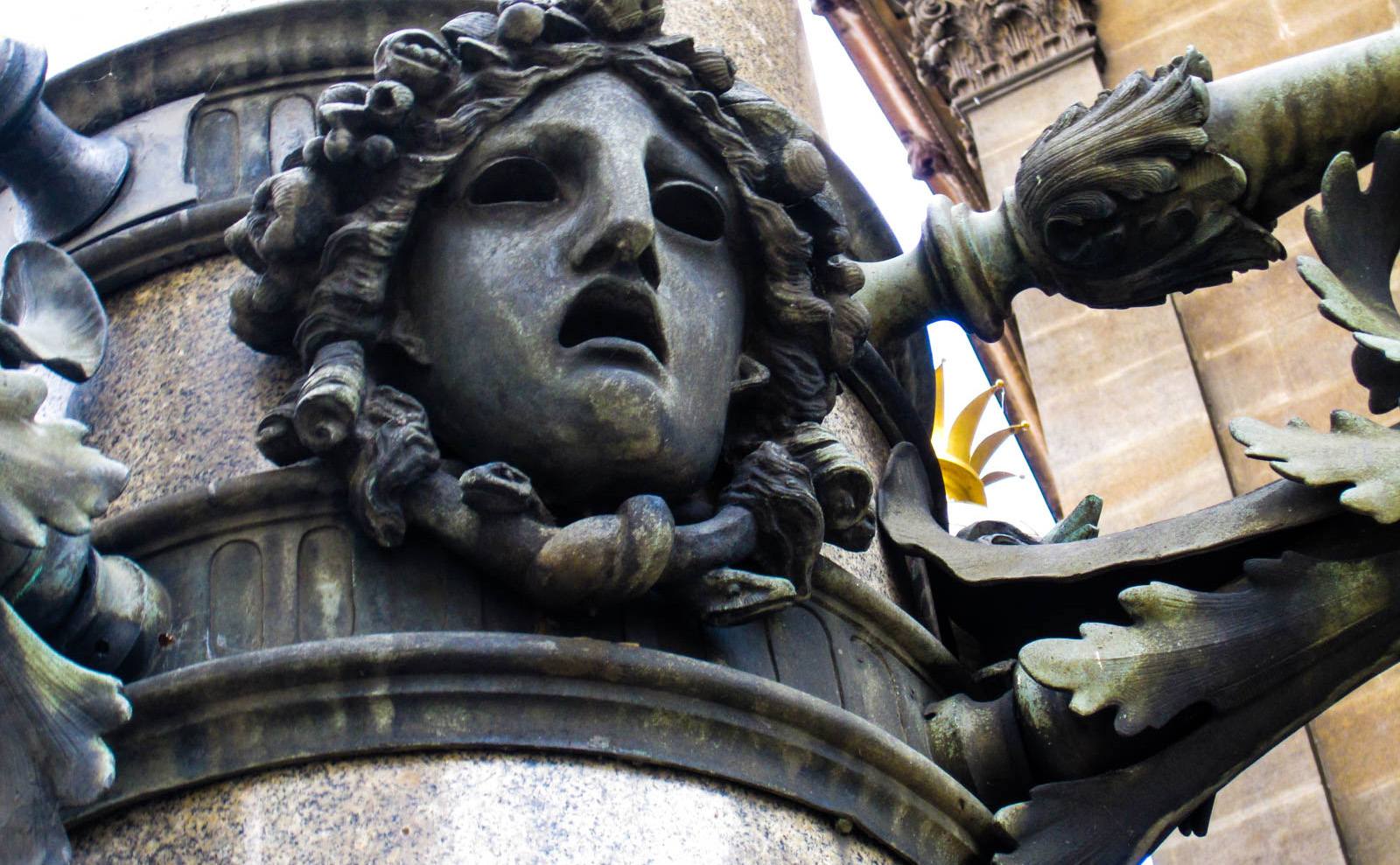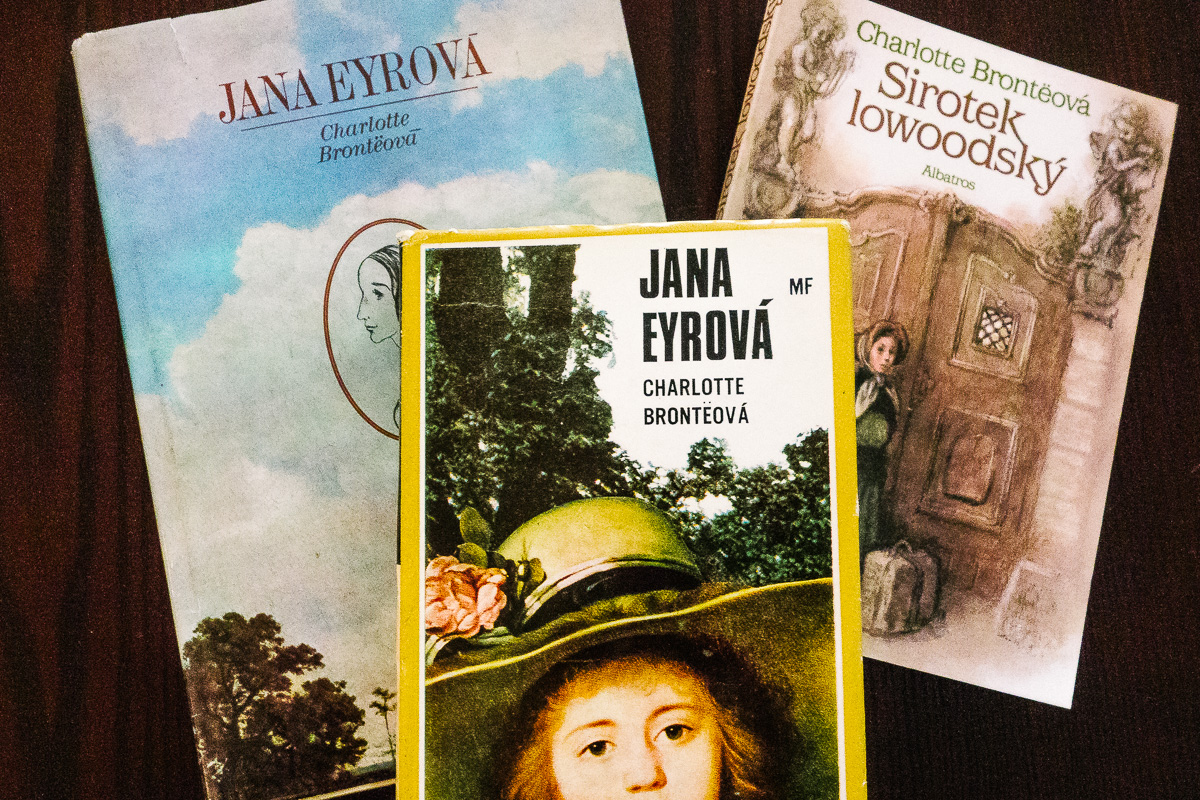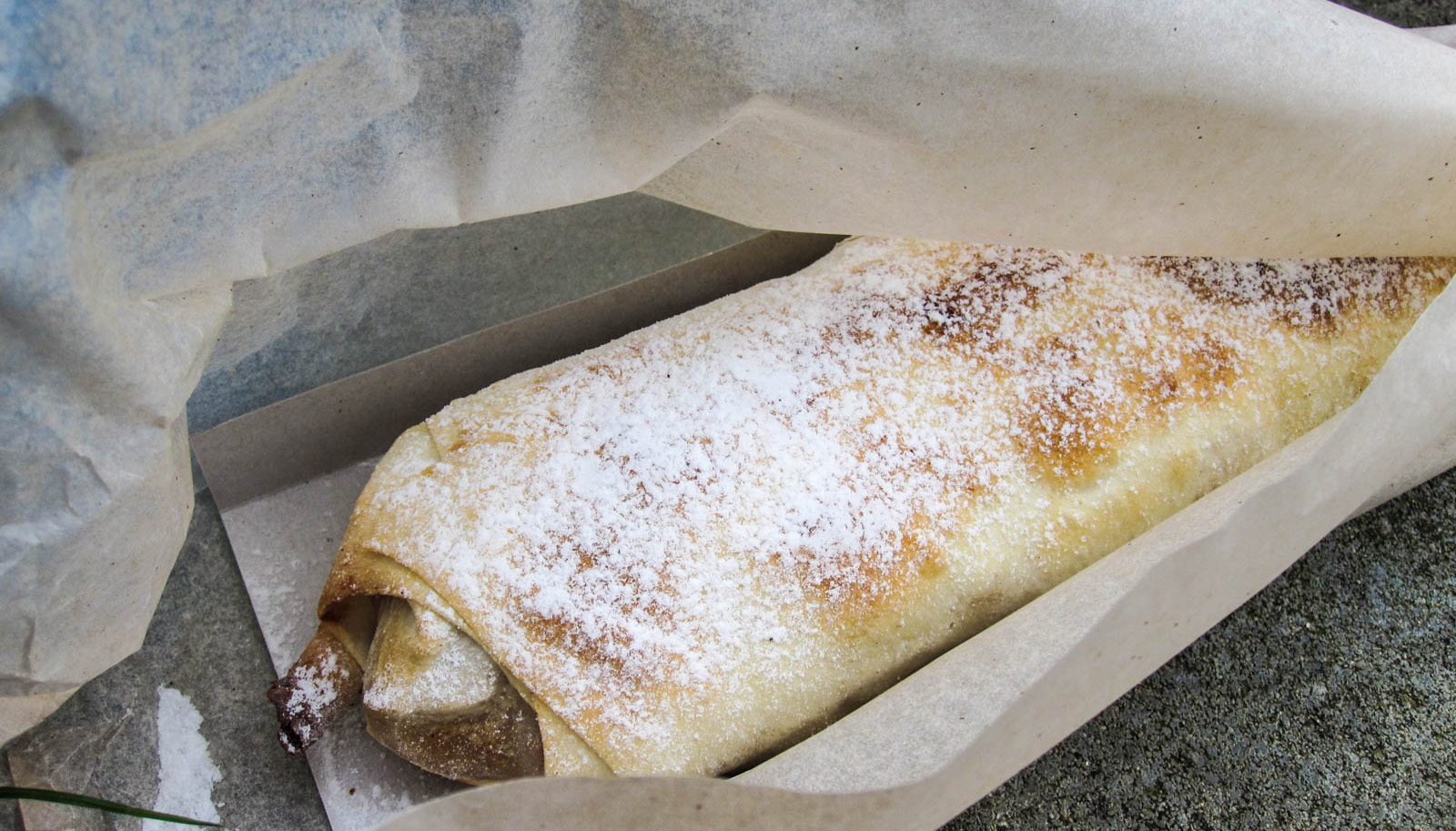
Armchair travel around the world!
Start your reading adventures with our FREE Reading Atlas.

- Around the World in 14 Books
- 7 Thrilling Book Series
- 6 Audiobooks That Are Like Theater For Your Ears



After living in San Francisco, Austin, and a small town in Vermont, David and Melissa sold all their stuff and moved to Prague. At any given time, on any day, you might hear Czech, Russian, German, English, Slovak, or Vietnamese being spoken in their neighborhood. In this essay, Melissa describes the very first afternoon they ever spent in Prague.

In hindsight, it was a distinctly flawed plan.
It was 2010, our first trip to Prague, and our first adventure to Europe in a decade. My husband David and I had read the solid advice that a walk outside in natural light could help ward off jetlag, and we’d also heard about the best ‘secret strudel’ bakery in Prague. Why not combine the two?
Within our first two hours on Czech soil, we’d disembarked from the plane, bumbled our way through passport control, found the driver who’d come from the hotel to collect us, checked into the room, ditched our bags, and set out for adventure — and strudel.
Šusta Strudel is now a fairly well-know spot for visitors to Prague — it even has its own website! — but ten years ago, it was far off the beaten path. Pre-trip web research had revealed an accurate address, and we were able to cobble together directions from Old Town to the residential neighborhood where pastry nirvana awaited. We decided it would be more interesting — and jet lag defeating — to walk the entire way. Sure, we could have ridden a tram most of the way there, but where’s the fun in that?
It was a fine day: sunny, warmer than we’d expected. Most travelers would take that as a good omen, but I was wearing my usual head-to-toe black: leggings, sweater, boots, and leather moto jacket. Despite the promise that outdoor activities would alleviate my jetlag, I was desperately tired and beginning to feel quite angry at the cobblestones, at David, at my beloved boots, at my increasingly heavy and hot jacket, and most vehemently at the stupid buttery strudel that was the catalyst for this particular march.
The walk — which should have clocked in around 40 minutes — seemed to take forever, as the unfamiliar city stretched itself out at our feet and relocated landmarks just as we were about to reach them. I pouted. I whined. And we eventually had to admit that we were… not lost, but, perhaps, taking a more meandering route than we’d intended.
In addition to world-class strudel, Prague is also the home of irresistible used bookshops known as antikvariát. They’re usually dusty and a bit cramped by the overstuffed wooden bookshelves. They’re all-together wonderful, tables and counters and floors strewn with boxes of antique maps, crinkly musical scores, technicolor magazines from the communist era, and postcards scribbled with handwriting in Czech, German, and Russian.
When an antikvariát magically appeared next to us on the street, we looked at each other, shrugged our shoulders and walked through the door — weary and agitated, but eager to do something that would somehow salvage our first day in Prague.
Whenever I enter a bookshop, I always head first to the Bs in fiction to look for a copy of my favorite book: Jane Eyre by Charlotte Brontë. Over the years, I’ve built a collection of unusual and unusually pretty copies, and an edition in Czech was on my wish list. In the dim light of the bookshop, I scanned the shelves for Jane without any results. When the bookshop clerk appeared through a maroon velvet curtain hanging over a doorway in the back of the shop, I asked in English, ‘Do you have Jane Eyre?’
Her response was raised eyebrows and a quizzical expression.
‘Jane Eyre,’ I said, ‘Charlotte Brontë?’
She paused and then looked suddenly alert. ‘Ah, Jana Eyrová! Charlotte Brontëovà! Moment, prosím…’ and she disappeared through the curtain.
When she emerged from the back — the mysterious, wonder-filled, mystical, magical back — she was holding a copy of Jane Eyre, Jana Eyrová, published in 1968 — a year deep in the grasp of communism and the year of my birth. I hugged the book to my chest while Dave paid the ridiculous amount of 60 crowns (about 3 dollars) and we headed out to continue our quest for strudel.

The literary spring in our step lasted long enough to get us almost all the way to Šusta Strudel. The bakery, such as it is, is located in the bottom floor of a Soviet-era apartment building that’s surrounded by dozens of similiar buildings, like a standing army of powered-down robots. Across the street from the strudel shop is a leafy park on a hilltop. The plan was to acquire the strudel and eat it in the park, a triumphant celebration of our pastry triumph.
We walked eagerly up to the sliding window next to the Šusta Strudel sign, our fatigue and frowns banished with the thought of butter, sugar, and apples. But the window was closed and the sign said — no translation necessary to understand the numbers — that the bakery closed at 5:00 p.m. It was 5:01.
‘Knock on the window,’ I whispered to Dave, too much of a chicken to do it myself but too committed to the strudel quest to give up. ‘We did not walk all this way to not get strudel.’
He frowned at me like he does when I’m asking him to do something ridiculous, then he walked to the window and knocked.
The glass slowly slid back and a face, with a grumpy expression that mirrored our own, peered out. Dave — my brave, pastry-loving hero — ordered, paid for, and procured the mighty apple strudel. The pastry was about the size of my forearm, dense and heavy for its size, hot to the touch, and emitting an aroma of butter and promises.

Just like that, we forgot about the walk, the park, the way we always feel kind of stupid and obvious when we first arrive in a foreign country. We unwrapped the white paper that was carefully folded around the strudel, realized we didn’t have a knife, and tore into the flaky, golden pastry like animals. Quest completed, next level unlocked.

Should you visit Prague and desire the world’s best strudel, a march across town in uncomforable clothing is not required. It’s easy to find now that Google Maps exists in the world. The shop is only open on weekdays, so plan accordingly. They offer three fresh, handmade flavors: apple, sweet cheese, and poppy seed. Should you visit in August or September, you’ll also find in-season plum strudel on offer.
Find hours and other pertinent info at the Šusta Strudel website.
You can lose many bookishly entertaining hours in antikvariat around the city. One of our favorites — Spálená 53 — is near to Wenceslas Square, which makes it easy to fit into a busy travel itinerary. The front of the shop offers new books, handmade journals, and unique postcards, plus an extensive selection of English-language novels and Prague-related books. The back of the shop is a perfectly dusty antikvariát. Don’t miss the inside hallway between the two halves with a shelf of used English-language paperbacks to pick up a disposable read for the plane, and be sure to explore the super-cheap books in the outside bins for a fun souvenir: old books written in Czech.
For hours and contact info, visit the Spálená 53 website.
Want to keep up with our book-related adventures? Sign up for our newsletter!
Can you help us? If you like this article, share it your friends!
Strong Sense of Place is a website and podcast dedicated to literary travel and books we love. Reading good books increases empathy. Empathy is good for all of us and the amazing world we inhabit.
Strong Sense of Place is a listener-supported podcast. If you like the work we do, you can help make it happen by joining our Patreon! That'll unlock bonus content for you, too — including Mel's secret book reviews and Dave's behind-the-scenes notes for the latest Two Truths and a Lie.
Join our Substack to get our FREE newsletter with podcast updates and behind-the-scenes info join in fun chats about books and travel.

We'll share enough detail to help you decide if a book is for you, but we'll never ruin plot twists or give away the ending.
Content on this site is ©2024 by Smudge Publishing, unless otherwise noted. Peace be with you, person who reads the small type.